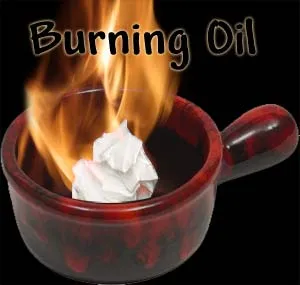 The Teacher's Corner
The Teacher's Corner
Burning Oil Experiment
Emergency Light
This week's experiment is thanks to Tropical Storm Gabrielle. It came right over our house Friday night, leaving us with LOTS of rain, LOTS of wind, and no electricity. Luckily, the power was back on within hours, but in the mean time it was getting very dark. Living in Florida (hurricane territory), we always have plenty of candles, but we wanted a little extra light. While adding a little extra illumination, I also managed to find an idea for this week's experiment.
 To try this, you will need:
To try this, you will need:
- vegetable oil
- a paper towel
- a glass or ceramic bowl (Not the good china!)
- matches or a lighter
Warning! This experiment uses fire. Be sure that you have permission and that there is an adult present to help. Most of all, be sure to be careful, be safe and use common sense.
Pour about 1/2 an inch of vegetable oil into the bowl. You can use regular cooking oil, Canola oil, peanut oil or any other kind of vegetable cooking oil. Tear a paper towel into four quarters. Crumple one of the quarters into a ball and place it into the bowl with the oil. You want the oil to soak the entire ball of paper, but you also want the paper to stick up above the surface of the oil.
Place the bowl on a table where it will not be bumped or disturbed. Use a match or lighter to carefully light the top edge of the paper towel. It should easily catch fire. Now watch carefully. The fire continues to burn, but the paper towel does not burn up. As long as there is oil in the bowl, the flame will continue without burning up the paper.
How can that be? What you have just made is an oil lamp, very similar to the ones that have been used for thousands of years. The flame of the match does not have enough heat to set a pool of vegetable oil on fire. In fact, if you stuck the match into the oil, it would go out. The paper towel serves as a wick, to carry the oil up to the flame. Since there is only a small amount of oil in the paper, and it is spread out very thin, it can get hot enough for something to happen. The flame cause the oil in the paper to break down, forming a flammable gas. This gas is what you are burning. As the oil in the paper changes and is burned, more oil soaks up into the paper. The oil actually keeps the paper cool enough so that it does not burn, except at the very edge where you first lit it.
This is a good experiment to know about when the lights go out. The light from the oil is brighter than a candle, and even if you are out of candles, almost everyone has some cooking oil in the kitchen. The vegetable oil burns very cleanly, and should not produce smoke or bad smells. The one draw back is that every once in a while, you may get a whiff of something that reminds you of cooking popcorn. If you have an electric stove, this can drive you crazy with a craving for popcorn while you are waiting for the power to come back on. Luckily, the wonderful folks at Florida Power and Light had the electricity flowing again before I resorted to trying to pop corn over my homemade oil lamps.
 Check out more classroom experiments
Check out more classroom experiments
All lessons are brought to you by The Teacher's Corner and Robert Krampf's Science Education Company.
Robert Krampf's Science Shows thehappyscientist.com